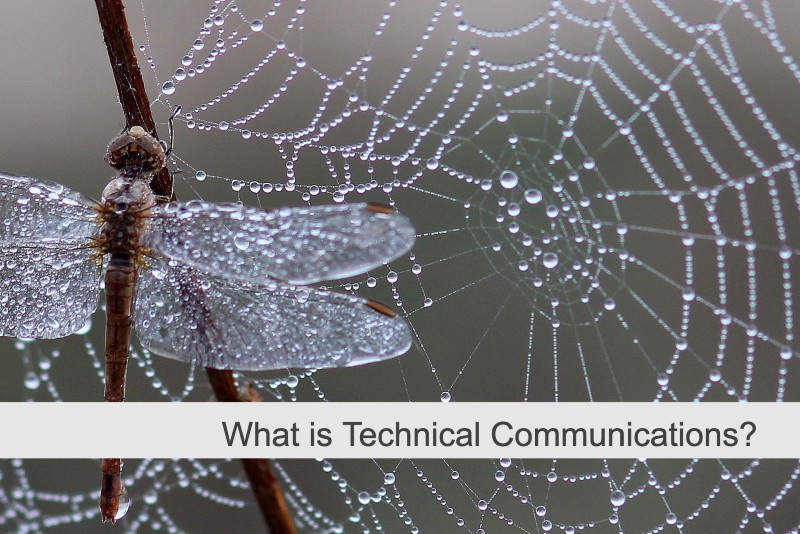
Summary
Technical Communications is a multi-faceted field of business communications that encompasses:
- a broad range of disciplines that specialize and often collaborate in the creation and distribution of detailed information to specific audiences who need it to accomplish defined tasks or goals.
- a wide variety of formats, methods of presentation, instructional designs, and modes of delivery, as with books, brochures, and pamphlets or the FAQs, search results and websites of electronic media.
- information designed for internal audiences, such as style guides, reports, or sales charts, and that which targets external audiences, such as contracts, terms of use, advertising, or customer support.
- technical writing, editing, and other coordinated processes, tools, functions, and sources that together comprise the integrated technical communications(ITC) strategy within an organization.
Technical communications as a field within business communications encompasses a range of disciplines that work together to communicate complex information to those who need it to accomplish a defined task or goal. It continues to evolve to meet the demands of an increasingly global and technology-reliant society.
Technical Communications Scope
The scope of technical communications in an organization can vary depending on the type of organization and industry, but in general, the following disciplines tend to fall within technical communications:
- Information Architecture
- Technical Writing/Authoring
- Technical Editing
- Technical Illustration
- User Experience Design
- Information/Document Design
- Instructional Design
- Training
- Translation/Localization
- Publishing/Content Delivery
- Technical Support/Knowledge base Management
- Technical Marketing
Definition of Technical Communications
The Society for Technical Communication defines technical communicators as those who “research and create information about technical processes or products directed to a targeted audience through various forms of media.” Even in industries where the final product or service is not very technical in nature, technical communications activities make up a surprisingly large portion of the effort required to design, produce, sell and support products. Thus technical communications is an increasingly collaborative profession, as specialists from these disciplines work together with designers, engineers, analysts, project management, quality control, sales, logistics, and customer support to ensure that accurate and relevant information is communicated at each stage of the product lifecycle. Media used to deliver technical communications include websites, web apps, books, brochures and other printed materials, social media, meetings and live presentations, e-books, video, and audio.
Because technical communications activities are key throughout many strategic and operational areas of an organization, planning and executing an integrated technical communications (ITC) strategy becomes increasingly important. ITC can be defined as the coordination and integration of all technical communication processes, tools, functions, and sources within an organization to convey information and knowledge relevant to optimizing the users’ product experience.
Integrated Technical Communications strategy encompasses six high-level processes:
- Analysis
- Research
- Design & Creation
- Production & Dissemination
- Archival & Disposition
- Feedback
Because each of the six processes can occur multiple times throughout the organization’s production cycle, technical communications processes are not solely sequential in nature. For example, in a software company, feedback can occur at multiple points, during design or testing, and after the sale of the software to a customer. The goal of the feedback is to produce a better product experience, so the activities that comprise feedback processes fall within the realm of technical communications, even if those performing the activities work in programming, QA, or the help desk.
Technical Writing, One part of Technical Communications
Technical writing comprises the largest segment of technical communications. Technical writers work together with editors, graphic designers and illustrators, document specialists, content managers, instructional designers, trainers, and analysts to produce a wide range of information products for use by internal or external audiences, including:
| Contracts | Online and embedded help | Requirements specifications |
| Customer Service scripts | Policy documents | Simulations |
| Demonstrations | Process flows | Training courses |
| Design documents | Project documents | User manuals |
| FAQs (Frequently Asked Questions) | Product catalogs | Warning labels |
| How-to videos | Product packaging | Web-based Training |
| Instructions | Proposals | Websites |
| Knowledge base articles | Release notes | White papers |
| Reference guides |
As modern society relies increasingly on technology for every aspect of life’s activities, technical communications will remain a viable, lively and varied profession and continue to grow in strategic importance.
Additional Resources for Technical Communicators
- Wikipedia article on Technical Communication (http://en.wikipedia.org/wiki/Technical_communication, accessed June 28, 2020)
- Society of Technical Communication (http://stc.org)
- Every Page is Page One, blog by Mark Baker The Purpose of All Communication is to Change Behavior (accessed June 28, 2020)
Related Searches
- What is Technical Writing?
- How to Become a Technical Writer
- Essential Technical Communications Skills
- Technical Writing Terms and Definitions
- History of Technical Writing
- Software Tools for Technical Writing
Recommended Next Readings on TechWhirl’s Tech Writer Today
- TechWhirl’s Technical Writing Research Portal (Various)
- TechWhirl’s Technical Communication Research Portal (Various)
- Integrated Technical Communications (Connie Giordano & Al Martine)
- The New Communications Cycle series (Connie Giordano)
- Tech Writer Tips and Tricks (Various)
- Metrics, Goals, and Thinking Quantitatively (Lois Patterson)
- Usability and User Experience: Related but Different (Silvia Zimmermann)
- Techie Writer Series (Eric Ray)